Food Preservation: Fermentation
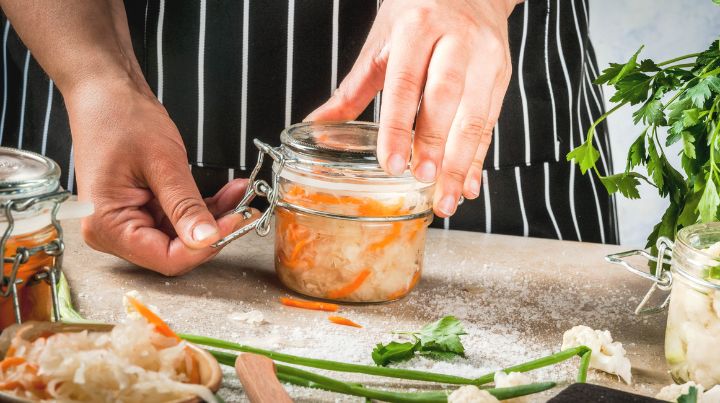
Fall is a season of abundance for many people. If you’ve got an abundance of food from your garden or farmer’s market, you may be wondering how to preserve it. Modern methods of preservation, such as canning or dehydrating, are great, but it’s also worthwhile learning about a far older method of preservation—fermentation.
What Is Fermentation?
Fermentation is the conversion of sugars and carbohydrates present in food to acids and alcohols. Food spoilage occurs when bacteria and fungi land on food and colonize it; if the food has been naturally acidified through controlled fermentation, it is less appealing to most common microorganisms responsible for food spoilage, and so the food will stay safe to eat for considerably longer.
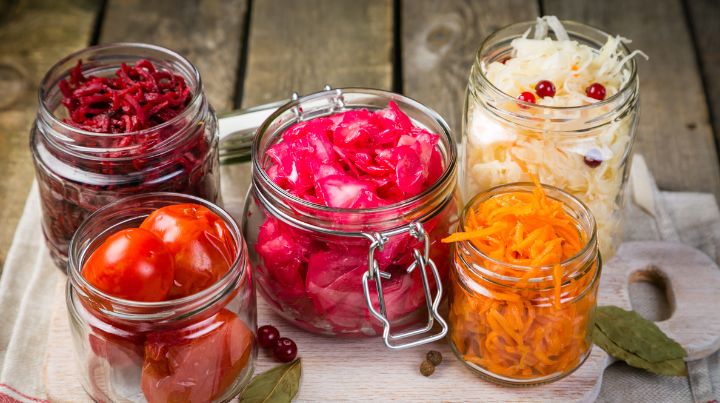
Successful fermentation relies on encouraging the growth of beneficial microorganisms to crowd out the undesirable ones that cause spoilage. In sauerkraut, lactic acid-loving bacteria keep everyone else out; when brewing alcohol, various yeasts keep out nasty bugs until enough alcohol is produced to keep out pretty much everything.
The oldest evidence of food fermented by humans comes from a site roughly 9000 years old in Sweden. People added pine bark and seal fat to fish to increase its acid content, then wrapped the treated fish in animal skins. While fermented fish doesn’t sound particularly tasty to me, there are plenty of other fermented foods that I do enjoy.
Is Fermented Food Good For You?
Yogurt, sauerkraut, kimchi, beer, country wines– they’re all delicious and healthy. Fermenting adds nutritional value to food. Probiotics found in fermented foods are essential for gut health. And, what may turn out to be best of all, you don’t need power to produce them. The human practice of food fermentation predates all our modern conveniences, which means that we can ferment foods without worrying about power outages.
There are countless books, articles, and webinars about fermenting. I’m a book lover myself; the books I most often go to are Nourishing Traditions by Sally Fallon, The Self Sufficient Life by John Seymour, and The Art of Fermentation by Sandor Katz.
If you want to give fermenting a try, think first about what fermented foods you already consume. Are you addicted to kombucha? Give that a try. Do you eat yogurt multiple times a week? You’ll save money by making it yourself!
People that get into a good fermentation rhythm of foods they eat regularly can really trim their grocery bills.
DIY Sauerkraut
Think also about what you have readily available. I live near a farm that produces beautiful cabbages every year. Cabbages are big, cheap, and nutritious: what’s not to love? And I love sauerkraut evenmore. So, last year, I made my own sauerkraut.
Shredding the cabbages can be a lot of work, though there are tools that will make it easier. Mandolin-style slicers are easy to find online. If you’ve got a good food processor, many of them come with blades that you can use to slice cabbage that’s been cut into large chunks. Once shredded, layer the cabbage with the desired amount of salt and then pound until the cabbage begins to release its juices.
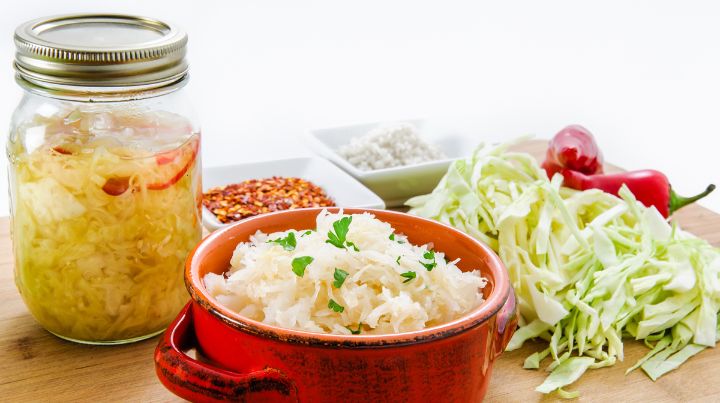
How much salt to add is mostly a matter of taste. People can ferment without any salt, but it’s more likely to spoil and won’t be as crisp. If you add too much salt, the sauerkraut might turn pink in some areas. It’s safe to consume but weird looking. I did this the first time I made sauerkraut because I really like salty food, so I backed down on the salt a little bit the second time I made sauerkraut. Both times the sauerkraut tasted fine and was safe to eat; it just looked strange the first time around.
After pounding the cabbage, weigh it down so that it’s totally submerged. I needed to add a little brine (3 tbsp salt/qt water) to cover my shredded cabbage completely; you may need to, as well. Then cover your fermentation vessel, and wait.
Keeping the cabbage submerged is essential. After a week or two, molds may start to develop on the surface. As long as you skim them off a couple of times a week, they shouldn’t pose a problem. I checked mine every other day and just lifted any molds off with a fork. Molds won’t become a problem unless you let them sit and grow down to the cabbage itself because they can make it mushy and bad-smelling.
The length of fermentation depends on many things. My kitchen is on the north side of the house, and it’s not insulated; during the winters, the temperature rarely rises above 60 degrees, which isn’t really warm enough to ferment anything. I make sauerkraut in the fall when my kitchen is more reliably above 65 most of the time, and it takes about four weeks to achieve the tartness I like.
Pickles!
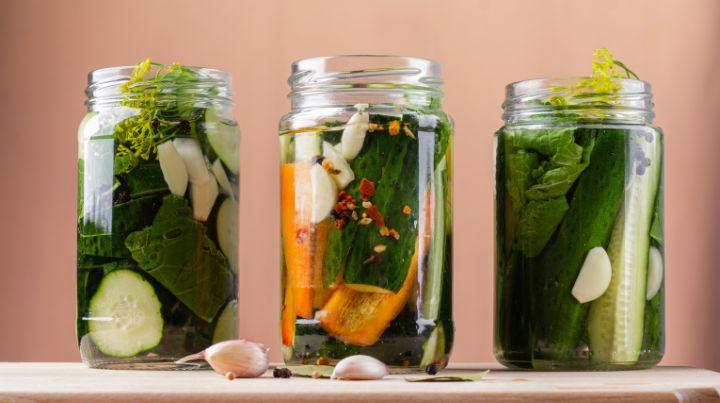
Not everything takes a month to ferment, though, especially not in the summertime, when my kitchen is typically between 70 and 80 degrees. In the summer, I like to make lacto-fermented pickles with the cucumbers from my garden.
A little gadget I got at the hardware store makes countertop fermenting really easy. The spring forces the cucumbers to stay submerged, and a little airlock on the lid lets gases escape but not enter. It fits onto quart-sized wide-mouth Mason jars.
I simply fill the jar about half full of sliced cucumbers (usually about four or five little picklers), and add 1 tbsp. mustard seed, 1 tbsp. dried dill weed, 2 tbsp. salt, then add water until there is about an inch of space left at the top. I add the spring, making sure all the cucumbers are below the water’s surface. I screw on the lid, wait two days, and then I’ve got tart, tasty pickles.
How Can I Store Fermented Items?
Once ready, I put the lacto-fermented pickles in the fridge, where they keep for a month or so. They might keep longer; I don’t know because my teenagers and I really like them and eat them quickly.

Because I make sauerkraut in the fall, and because I make large quantities, I put it in my root cellar. Some people can sauerkraut; I don’t because the heat from canning kills a lot of the beneficial bacteria. I just keep it cool. My root cellar starts dropping below 55 in October most years and doesn’t rise above till May or so. In November, it’s usually at or below 50, so it’s like having a slightly warm fridge. I have kept sauerkraut in the cellar for three months without any ill effect; as mentioned above, fermentation stops below about 60 degrees, and once fermented, the sauerkraut is acidic enough that it’s not vulnerable to many spoilage organisms.
Fermented Beverages
Fermented beverages are another way to enjoy the health benefits of lactobacilli. I have a few friends that brew kombucha, which is tasty and healthy. This summer, I started brewing kvass, a Russian beverage made using stale bread.
Kvass is really easy to make. My teenagers aren’t crazy about it because it’s not very sweet, but I love the sour tartness and the fact that I can make it with old bread, sourdough starter, and partly ripe apples that fell off my tree.
I almost always make sourdough bread, and I keep a gallon bag for ends and crust pieces that fall off the loaves. I live in a semi-arid environment, so I can just keep the bag partly open, and the bread dries out at room temperature; if you live in a humid environment, you might want to put them in the oven at 200 until they’re really rock hard if you want to keep them at room temperature. Otherwise, you’ll need to keep bread ends in the freezer.
When I have about 5 slices worth, I boil a half gallon of water. I place the bread in a large bowl, pour the water over the bread, add 2 tsp of salt, and wait for it to get to room temperature. Once it hits room temperature, I add half a cup or so of sourdough starter, cover it with a towel, and let it sit for two days in hot weather, three days if my house temperature is closer to 70.
After it has sat for a few days, I pour the mixture through a colander to remove big bread chunks (it’s not going to be perfect) and then pour it into a half-gallon jar. I add a couple of tablespoons of raisins and one or two apples, depending on their size, cut into large chunks. I always need to add a little water to fill the jar because the air in my environment is so dry that a fair bit evaporates while it’s sitting on my counter. Once the jar is filled, I put it in the fridge and wait until it’s ready. It usually takes a week or so.
How do you know it’s ready? Well, raisins are a traditional addition because, when they float, it’s a sign that enough lactic acid has been produced and the kvass is ready to drink. You could add other fruits, too. I just have apple trees and a grapevine, so that’s what I use. Once ready, I pour it into pint jars and put it in the cellar, where it stays pleasantly fizzy for at least a month. I keep one jar in the fridge at a time to conveniently consume. It’s tasty and very thirst-quenching during the summer, with far less sugar than Gatorade.
The options for fermentation are just about limitless. I’m still working on my fruit wines; they taste delicious and are quite alcoholic, but I obviously got the timing wrong somewhere because every bottle I’ve opened so far goes off like a rocket. Opening over the sink won’t solve my problems; the first bottle I opened sprayed the ceiling. I’ve been opening the rest outside. I’ll keep trying; the results are delicious enough to make the effort worthwhile.
Can I Ferment Things Besides Fruits & Veggies?
I’ve focused on fruits and veggies here, but people ferment meat and dairy products, too. Yogurt is very easy to make at home. Fermented meat and fish products are somewhat more complicated and have been a staple of societies such as Inuit and Scandinavians for millennia. If you want to try those, attend to the details.
Fermentation is not fail-safe, but the failures are usually obvious. If something goes wrong and is no longer safe to eat, it will smell so disgusting and nasty that you won’t be tempted to eat it anyway. People have gotten botulism from fermented fish, but they are exceedingly rare. In those cases, people got botulism when they attempted to shortcut Native fermentation practices. Like every other food preservation method, you need to follow instructions, but if you pay attention to the details, you’ll be fine.
The truth is our food production, and transportation infrastructure is facing so many problems right now. YouTube has been full of videos of farmers warning about coming shocks; here is one out of many videos, if you still need convincing.
Those of us without very high incomes are going to need to be as resourceful as humanly possible, putting aside whatever is available. Food is still being produced, but the days of picking and choosing are probably going to be over before too long.
This doesn’t mean we all have to starve. Americans still waste a lot of food; according to the USDA, somewhere between 30 and 40% of food winds up in landfills. We can focus on becoming more thrifty and resourceful with the food we have available, and fermentation is one of the many means available to help us.
Additional Resources:
- Edible Landscaping: Food Hidden in Plain Sight
- What Are the 10 Easiest Medicinal Plants to Grow?
- Prepping for Healthcare Shortages
- Best Freeze Dryer for Sale: 7 Buying Tips & What to Know!
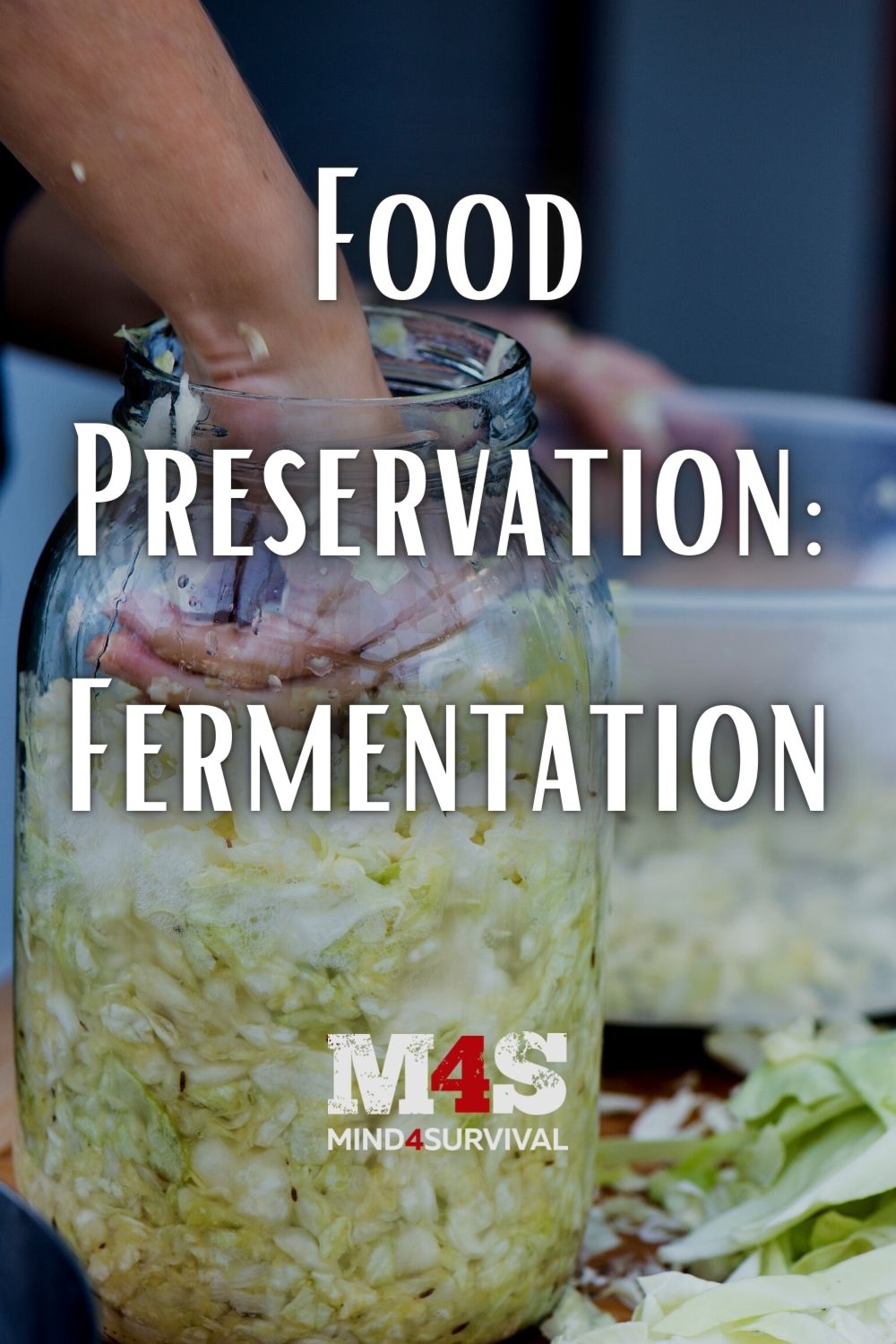
Don't Miss Out!
Join the thousands of people who rely on Mind4Survival preparedness advice by subscribing to our FREE newsletter.
- Practical preparedness information
- Zero Spam
- < 0.25% of people unsubscribe




Join Mind4Survival!
Stay informed by joining the Mind4Survival! 100% Secure! 0% Spam!
Follow Us!
Affiliate Disclosure
Mind4Survival is a free, reader-supported information resource. If you make a purchase through our link, we may, at no cost to you, receive an affiliate commission.

